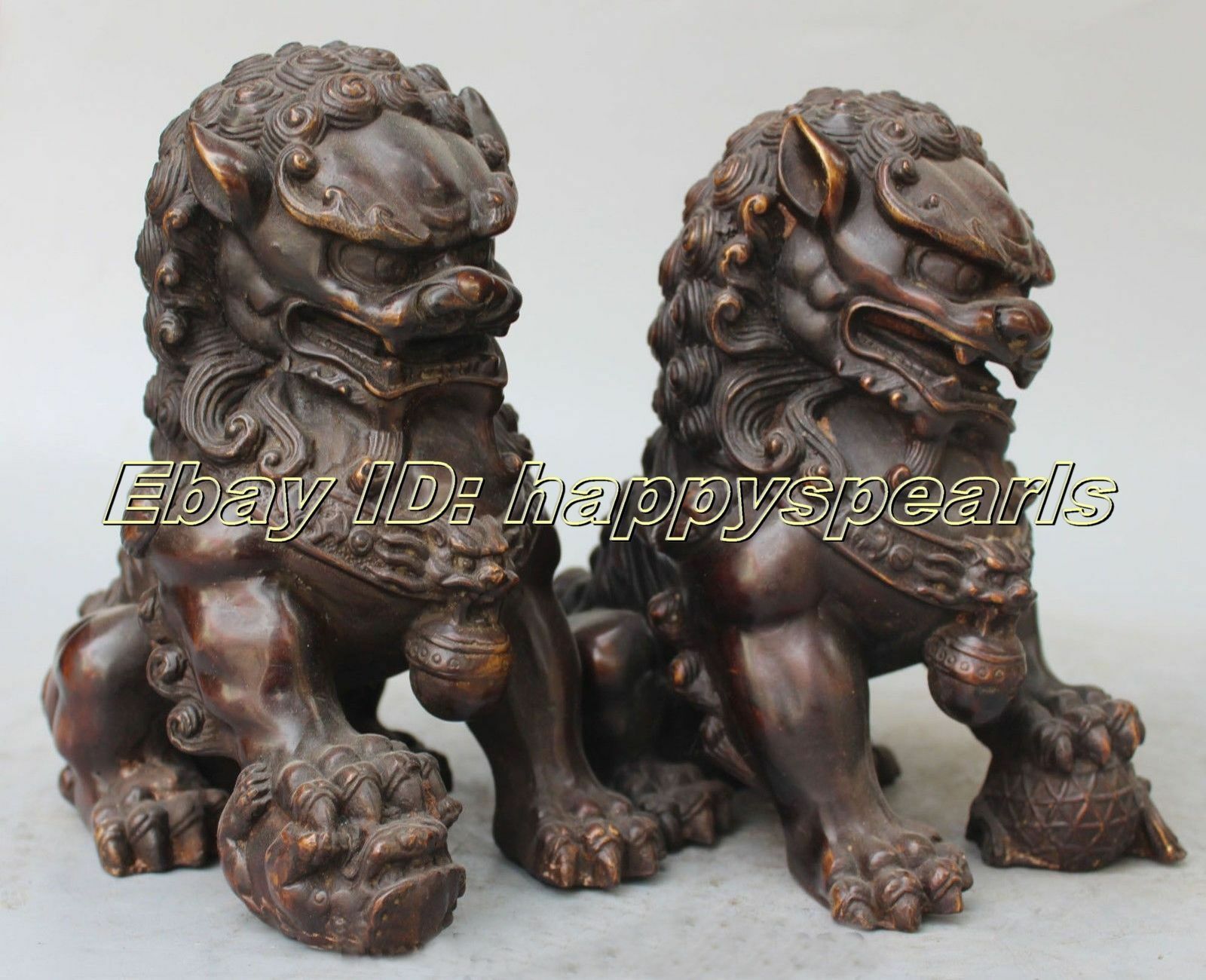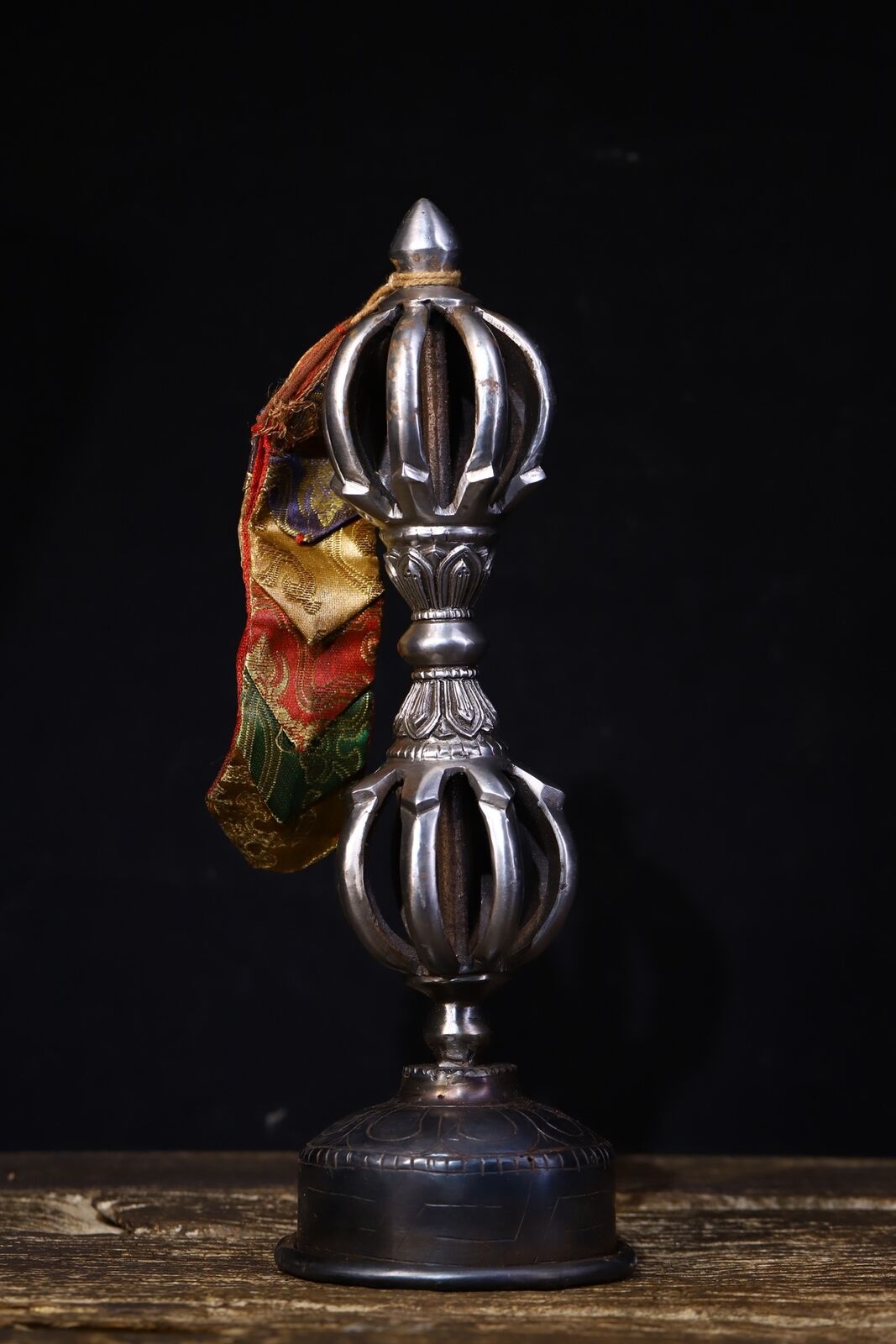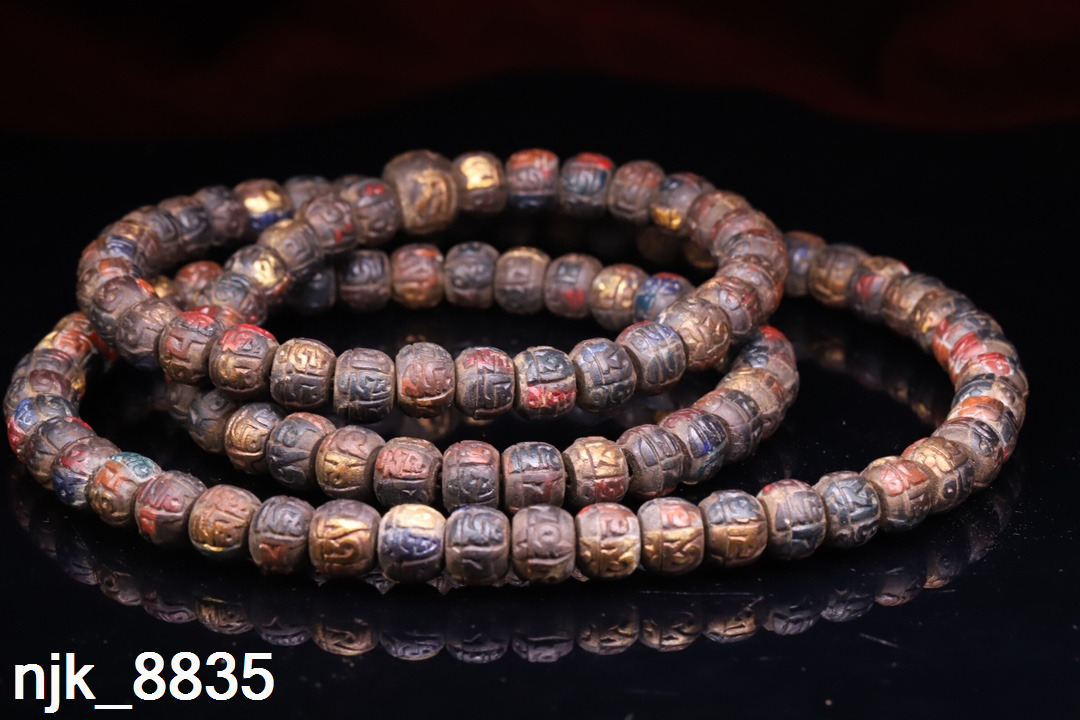-40%
Antique Bronze Fengshui Foo Fu Dog Lion Ball Pair Old Temple God Statue
$ 26.39
- Description
- Size Guide
Description
Thanks for your browse!Bronze is made of bronze (copper and tin alloy) made item . On behalf of the birth of the Bronze Age civilization. Because bronze throughout the world, so it was a symbol of a worldwide civilization. The earliest bronzes appeared in 5000 to 6000 years ago . Chinese bronzes beautifully produced, and enjoys a high reputation in the world bronze in artistic value, representing the Chinese culture in the Qin Dynasty.
Size: Height 15.5cm
Materials: Bronze
Condition: Good condition
Origin: China
Pair Bronze Foo Dogs Statues
Chinese guardian lions, also called Fu (Foo) Lions, lions of Buddha, or sometimes stone lions (石獅, Pinyin: Shíshī) in Chinese art[1], are a common representation of the lion in pre-modern China, which is believed to have powerful mythic protective powers that has traditionally stood in front of Chinese Imperial palaces, temples, emperors' tombs, government offices, and the homes of government officials and the wealthy from the Han Dynasty (206 BC-220 AD), until the end of the empire in 1911.
Lions of Fo are always created in pairs, with the male playing with a ball and the female with a cub. They occur in many types of Chinese pottery and in Western imitations[2].
Pairs of Chinese guardian lions, also called Chinese stone lions are still common decorative and symbolic elements at the entrances to restaurants, hotels, supermarkets and other structures, with one sitting on each side of the entrance, in China and in other places around the world where the Chinese people have immigrated and settled, especially in local Chinatowns.
In Tibet, the guardian lion is known as a Snow Lion and similar to Japanese shishi. In Myanmar they are called Chinthe and gave their name to the World War II Chindit soldiers.
Please feel free to contact me if any question, comments or queries you may have. I am quite glad to help what I can.











